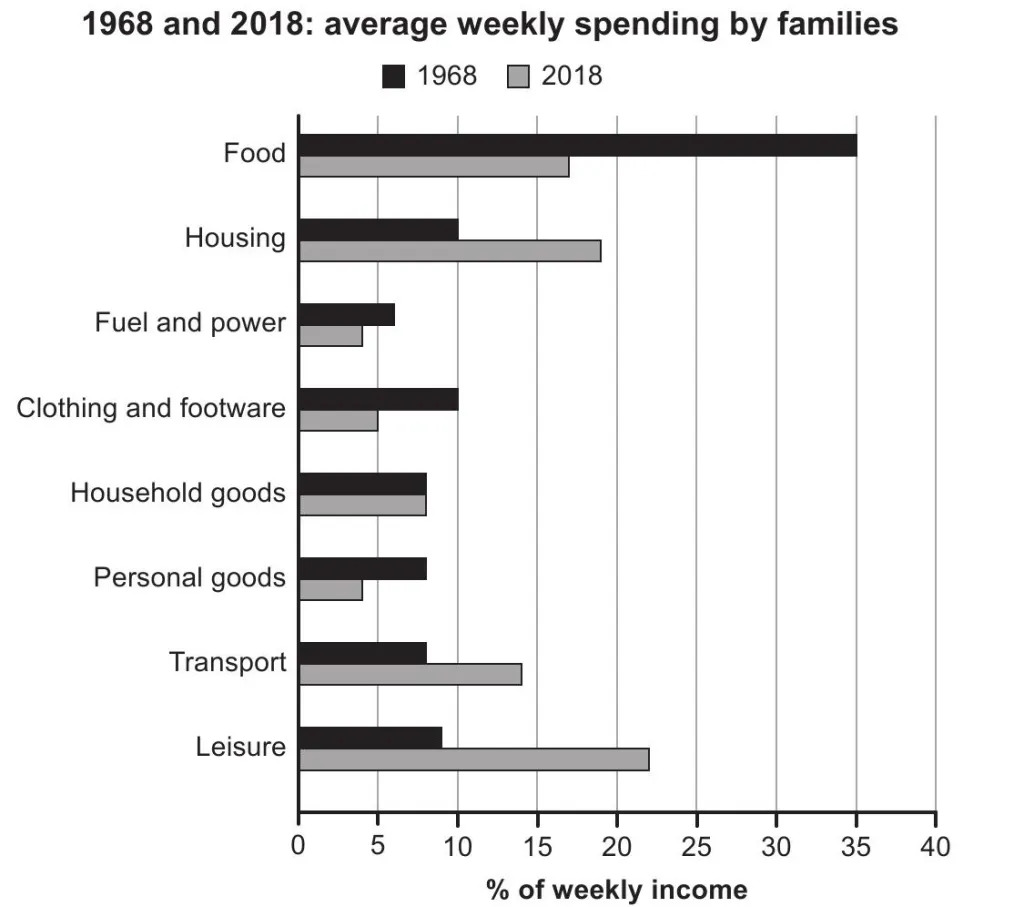Gabriell
Sep 26, 2022
Writing Feedback / IELTS WRITING TASK 1: BAR CHART ABOUT WEEKLY EXPENDITURE. [2]
MY ESSAY:
The bar chart given presents data on how households in one particular nation spent their weekly income in the years 1968 and 2018.
Overall, the way families in this country spent their weekly income changed significantly over the period shown. Most notably, although in 1968 most families' weekly income went into food, households spent most on housing and leisure in 2018.
In 1968 weekly income of each family to buy food was at 35%, around three times higher than that on housing, clothing and footware. During this year, the proportion of weekly income spent on household goods, personal goods, transport, leisure and fuel never exceed 10%.
In the next 50 years, the percentage of weekly income spent on food halved to around 17%, lower than housing and leisure which were about 18% and 22% respectively. The expenditure on personal goods, clothing and footware also fell heavily in 2018. Meanwhile, each household's weekly income proportion on fuel and power decreased slightly by 2% and this percentage for household goods did not vary during this period.
(173 words)
The chart below gives information about how families in one country spent their weekly income in 1968 and in 2018.
MY ESSAY:
The bar chart given presents data on how households in one particular nation spent their weekly income in the years 1968 and 2018.
Overall, the way families in this country spent their weekly income changed significantly over the period shown. Most notably, although in 1968 most families' weekly income went into food, households spent most on housing and leisure in 2018.
In 1968 weekly income of each family to buy food was at 35%, around three times higher than that on housing, clothing and footware. During this year, the proportion of weekly income spent on household goods, personal goods, transport, leisure and fuel never exceed 10%.
In the next 50 years, the percentage of weekly income spent on food halved to around 17%, lower than housing and leisure which were about 18% and 22% respectively. The expenditure on personal goods, clothing and footware also fell heavily in 2018. Meanwhile, each household's weekly income proportion on fuel and power decreased slightly by 2% and this percentage for household goods did not vary during this period.
(173 words)

cam17t13.jpg
